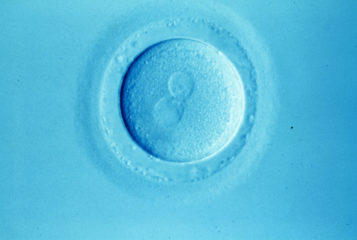It is not every day that we can examine the details of the first use of a new reproductive technology. But the first live birth of a baby following the use of a mitochondrial replacement technique (MRT) in IVF last year gives a window into just this. The case (see BioNews 895) – with procedures carried out in both the US and Mexico – also raises legal questions.
The birth garnered a huge amount of attention after New Scientist magazine broke the news last September. MRT is a technique that aids women affected by a heritable mitochondrial disease to have genetically-related children free from mitochondrial DNA (mtDNA) disorders. These cause neuromuscular diseases that can have devastating effects, including heart and major organ failure, dementia, stroke, blindness, deafness, infant encephalopathy, and premature death.
From the moment the news broke until a paper detailing the case was published on 3 April this year (see BioNews 895), the only technical information we had about this experimental procedure came from three sources: a short conference abstract, press interviews with two of the research team, and a video recorded at a reproductive conference. A study was finally published in Reproductive BioMedicine Online by Dr John Zhang at the New Hope Fertility Center in New York City and Guadalajara, Mexico, and colleagues.
Accompanying the paper was a critical editorial where both the procedure and the ethics were assessed. On the technical side, it has been pointed out that the specific technique that Zhang's team employed diverts from other 'gentler' methods that could have been employed.
From an ethical perspective, the aspect that has received more attention is that of the consent forms. For example, a news feature in Nature focused heavily on this point. According to the Reproductive BioMedicine Online editorial, the consent form that the patient received only discussed the MRT procedure in a superficial way. Nonetheless, the authors assert that 'the patient received extensive counselling over the course of several years'. A second aspect of contention is that the egg donation consent form did not mention that the eggs would be used for a mitochondrial replacement technique.
In addition to these two important points there is a third aspect that warrants attention, and that has been constantly under-reported: that of the legality of the procedure. This question is particularly vexatious given that part of the procedure happened in the US and another part in Mexico. In a paper published in the Journal of Law and Biosciences just weeks before Zhang's study, Maria de Jesús Arellano-Medina of the National Autonomous University, Mexico City, and I examined the legality of this procedure in Mexico, with the information that was available at that time.
At that point everything pointed towards the fact that the use of MRT and the transfer of the oocyte happened in Mexico. Now we know that the MRT procedure happened in New York and that only the transfer of the embryo happened in Mexico (for an account of the legal situation of MRTs in the US see here). With this new information we are reassessing our previous claims, which still seem to stand. Our previous claim is that, under our interpretation of the law, Dr Zhang's team broke the Mexican Regulations of the General Health Law on Health Research.
In addition to reassessing the legal aspects of this biotechnological feat there are other questions to which we want answers, and had hoped that Dr Zhang's publication, or the accompanying editorial, would have addressed. These questions relate to whether or the extent to which Dr Zhang's team sought advice at the federal level from the Mexican National Council on Bioethics, and from the Secretary of Health; and also if they sought it at the state level from Jalisco's Council on Bioethics and from Jalisco's Secretary of Health. Answering these questions is important in order to have the entire picture about the legality of the procedure in Mexico.
Additionally, it is also important to have answers to these questions because according to the editorial: 'The authors received approval from the Internal Review Board (IRB) of the Mexican clinic for transfer of a “euploid embryo resulting from cell reconstruction”. The Board also approved a general protocol that included spindle transfer, oocyte reconstitution, intracytoplasmic sperm injection (ICSI), and preimplantation genetic screening (PGS).' The statement appears to suggest that there are plans for carrying on the MRT procedures in Mexico. This suggestion seems to gain traction from the declarations of Dr Chavez-Badiola, who has said that the team is planning to use the MRT technique, Maternal Spindle Transfer, in 20 pregnancies in the first half of this year. Therefore, it is clear that even after the publication of Zhang's paper and the accompanying editorial, there remains considerable uncertainty and pressing questions about the legal and ethical issues surrounding this case.





Leave a Reply
You must be logged in to post a comment.